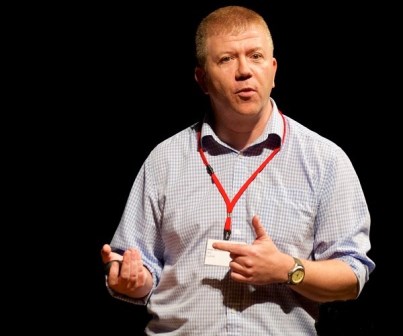Left behind or out in front?
20/02/2017 - 11.40
Andy Westwood - Director of the University Observatory
An article published in the Guardian last week asked what would happen if a university went bust. Wolverhampton was one of the examples of a university that has seen “a serious decline” in acceptances from 18-year-old UK students in the past four years, and therefore could be at risk.
As the article says: “If you are losing students every year you just can’t go on doing that – something has to happen.” This may be true, but focusing solely on the lower numbers of 18-year-olds enrolling paints a too simplistic picture.
The article notes that Wolverhampton’s intake of 18-year-olds has fallen by 12% in a year, Cumbria’s by 13% and Southampton Solent and Sunderland by 18% and 26% respectively. This is against the backdrop of the teenage population declining steeply in the UK. Between 2015 and 2020, it is expected to fall by around 75,000(pdf) – which means a shrinking of the cohort by some 14% between 2010 and the early 2020s before it begins to rise again.
18-year-olds aren’t the only people who go to university, and targeting that age group and largely ignoring the rest doesn’t seem like the best approach.
By most measures, the Black Country – where Wolverhampton’s campuses are mainly based – is one of the most deprived areas of England. It has the lowest qualifications among its workforce – 22.4% have degree level qualifications compared to 37.1% nationally. And 19% of it’s residents have no qualifications at all, compared to 8.6% nationally.

It has the lowest proportion of graduate jobs at just 33.7% compared to 40.2% in the rest of the West Midlands, and 44.9% in the country as a whole. Other statistics inevitably follow: the gross value added (GVA) per head – a measure of what is generated by economic activity in an area – is low, and there are high levels of worklessness and, consequently, poverty.
It is right then that the University of Wolverhampton has a mission to try to change these things. It is among the top 10 universities that recruit the most students from the most deprived areas – with 20% from Hefce’s Polar 3 neighbourhoods compared to an institutional average of 11%. Wolverhampton also recruits over half of its students (56.9%) from deprived or disadvantaged groups. This is the second highest proportion in England, behind Bradford (58.3%).
Nationally this year, there has been a 5% fall in applicants, including a drop of 7% from the EU. Most of the former is made up of a decline in applications from older age groups. Among 19-year-olds, numbers were down 9%. And among 25-year-olds, applications were down 23%. In other words the sector is homogenising rapidly around young full-time students. The numbers of part-time students in higher education fell by 55% between 2010 and 2015 (pdf) and there have been similarly dramatic drops in work-based or non-degree studies.
In that context, let’s look again at Wolverhampton. According to Hesa data, in 2012-13 the university had a total of 21,857 students. By 2015-16 it had risen to a total of 23,270. Undergraduate full-time enrolments across all age groups has increased from 12,360 in 2012-13 to 13,088 in 2015-16. Recruitment into the first year of degrees has increased from 4,860 to 5,798 in the same time period. Within this there has clearly been significant growth among a number of groups unrepresented elsewhere.
To compensate for the fall in 18-year-olds, the numbers of older students and part-time students is increasing – bucking national trends. The biggest age groups among the undergraduate population are between 21 and 24, and over 30. In total some 66% of students at the university are over 21. Both these sections of the student population are twice as large as the numbers of 18-year-olds. And in a region with one of the highest rates of unemployment, 96% of graduates are in work or further study.
It is often said that higher education doesn’t suit everybody. But it should also be said that higher education policy rarely thinks about or describes everybody either.
And there is a clear set of contradictions. On the one hand we have an accelerating market where competition must fix everything. On the other we have an industrial strategy aiming to reinvigorate parts of the country where the economy is weakest. Longstanding regional inequalities are now accentuated by the politics of Brexit and the left behind. Universities like Wolverhampton, Sunderland, Teeside and Bradford are crucial to this agenda.
But it is hard to have it both ways. Higher education needs to be much more than a narrowing competition for 18-year-olds. Universities should be at the forefront of building skills throughout the workforce, and ensuring that there are jobs and firms that can use them. That’s exactly how it is in the Black Country.


/prod01/wlvacuk/media/departments/digital-content-and-communications/images-18-19/iStock-163641275.jpg)
/prod01/wlvacuk/media/departments/digital-content-and-communications/images-2024/250630-SciFest-1-group-photo-resized-800x450.png)
/prod01/wlvacuk/media/departments/digital-content-and-communications/images-18-19/210818-Iza-and-Mattia-Resized.jpg)
/prod01/wlvacuk/media/departments/digital-content-and-communications/images/Maria-Serria-(teaser-image).jpg)
/prod01/wlvacuk/media/departments/digital-content-and-communications/images-2024/241014-Cyber4ME-Project-Resized.jpg)
/prod01/wlvacuk/media/departments/digital-content-and-communications/images-18-19/210705-bric_LAND_ATTIC_v2_resized.jpg)